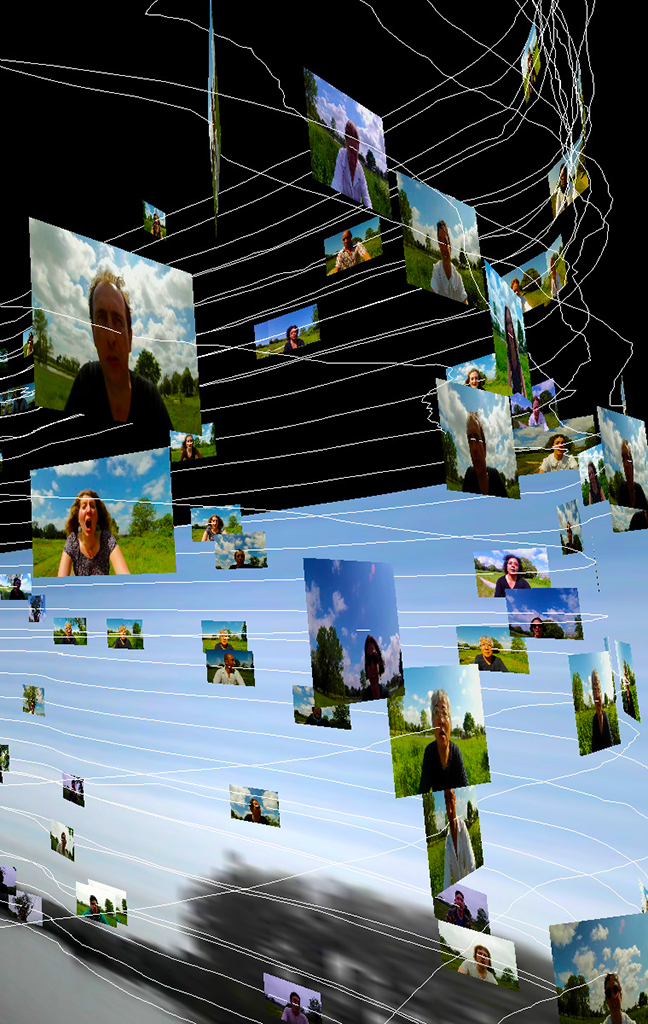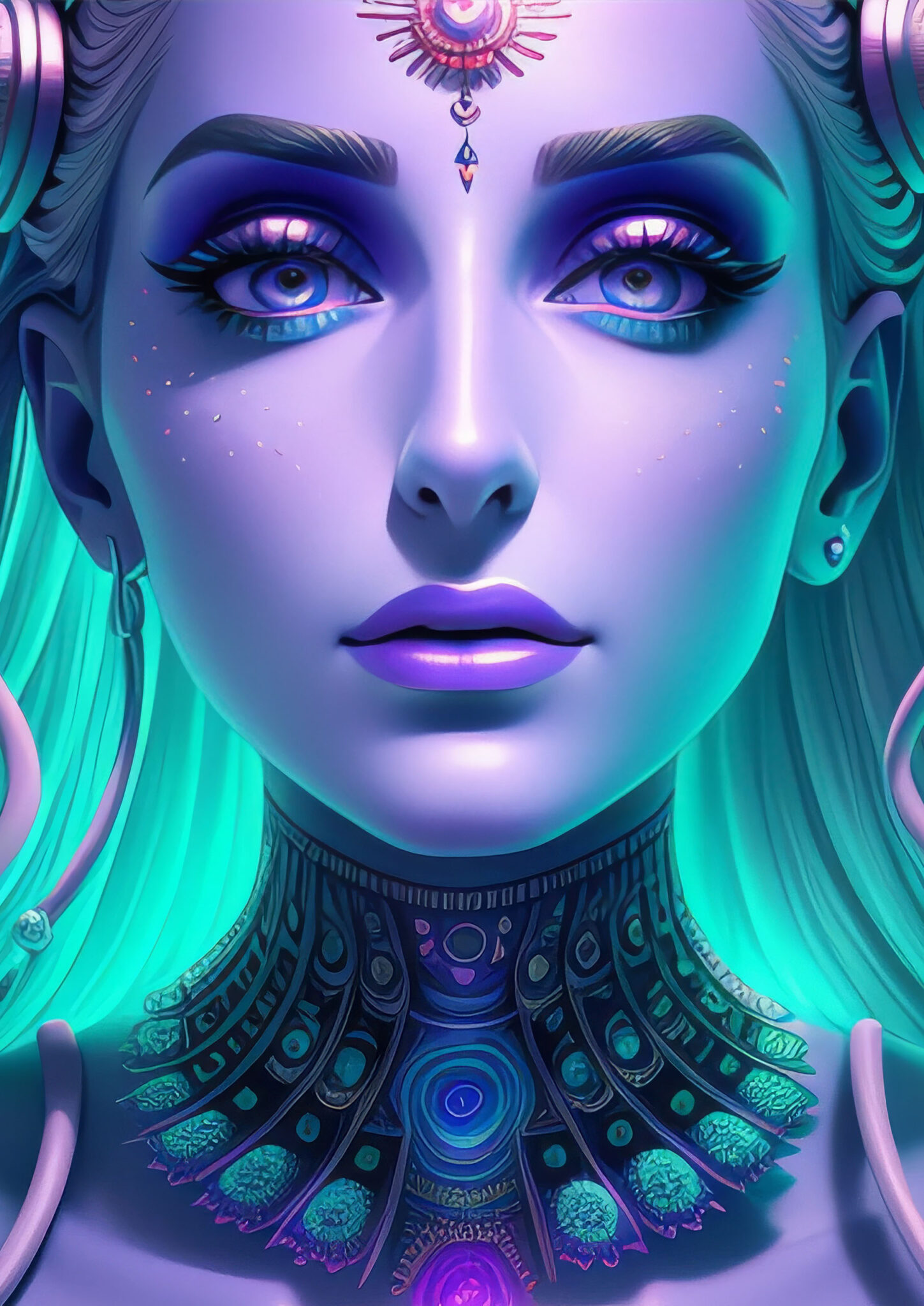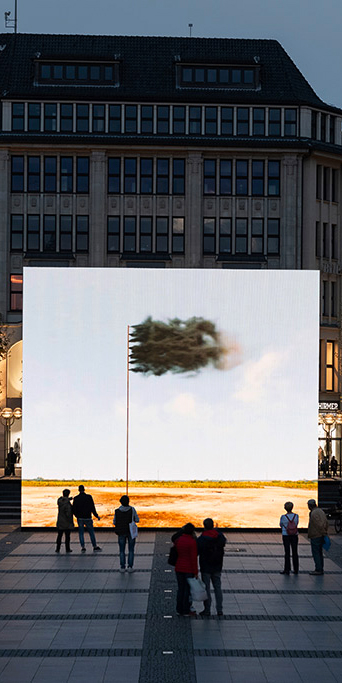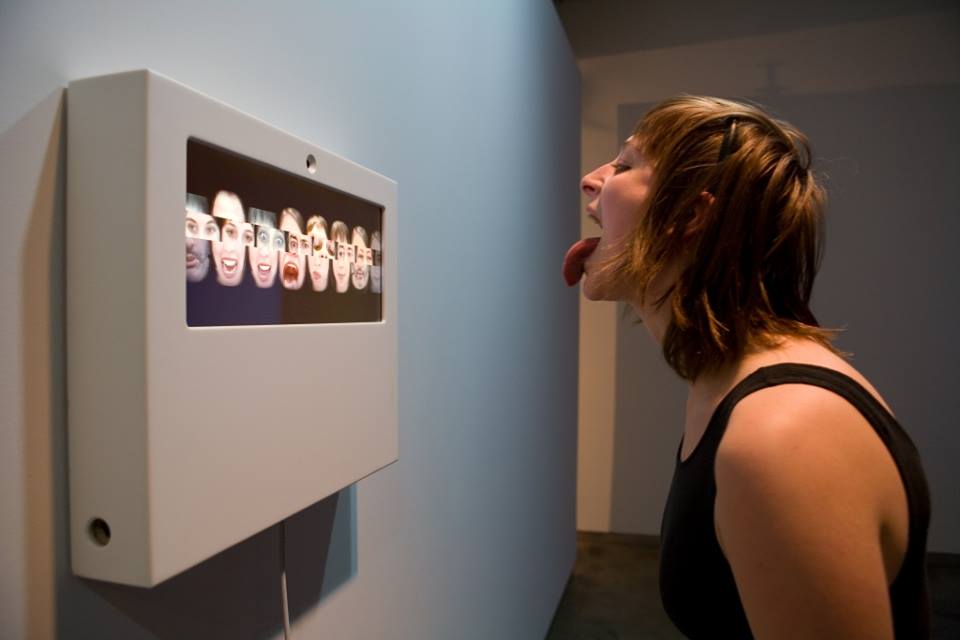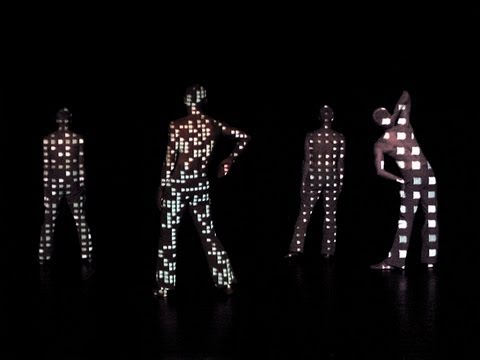’98m
Le travail d’Elizabeth McAlpine est souvent lié à la question du temps et à l’expérience du regard. Dans « The Height of the Campanile », l’artiste a calculé la durée de son film en fonction de la hauteur de son sujet, le Campanile, de sorte qu’au final la longueur de la pellicule soit équivalente à celle de la tour. De même, le temps nécessaire pour visionner le film et le rythme du travelling effectué par la caméra correspondent. Ainsi, tandis que nombre des oeuvres de McAlpine sont basées sur le montage, la répétition et la fragmentation, « 98m » se présente comme un simple plan-séquence.
L’image, au grain apparent, est projetée au mur à la taille d’une carte postale, pendant que le film forme une boucle au sein d’une structure en verre pensée par l’artiste. La taille de la projection rappelle que Venise est devenue une destination touristique incontournable. L’utilisation du Super 8 est une évocation de la pratique amateur – précédant l’invention de la vidéo, du touriste fixant le souvenir de ses vacances pour le projeter une fois rentré à la maison. Si ce support procure à l’oeuvre un caractère daté, la boucle continue et hypnotique formée par la pellicule suggère au contraire une certaine intemporalité, semblable à celle que peut ressentir le touriste qui découvre San Marco.
